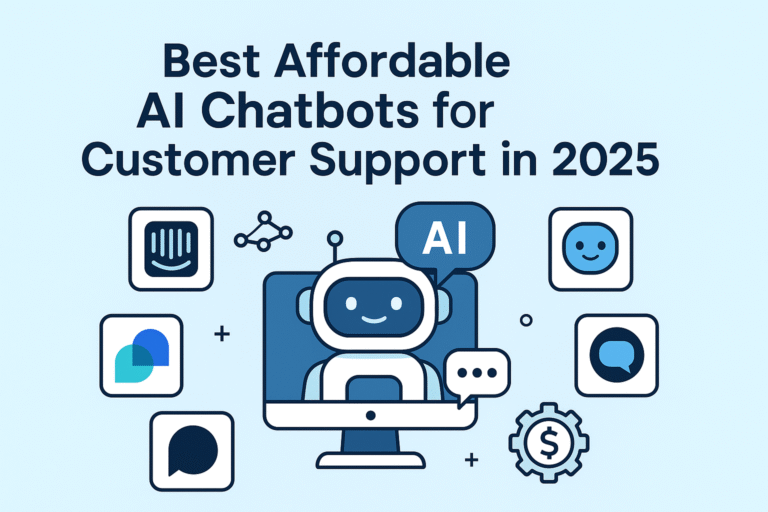2025 is shaping up to be a transformative year for the software industry, thanks to the incredible advancements in Artificial Intelligence (AI). AI-powered software solutions are no longer just a futuristic concept — they are quickly becoming a reality, offering unmatched automation, efficiency, and personalized experiences. In this blog post, we will dive deep into why 2025 is set to be the year of AI-powered software solutions, explore the key features of these innovations, and provide you with the top AI-driven software solutions that are set to change the game.
1. AI-Powered Automation: A Game Changer for Businesses
One of the most impactful developments in AI is its ability to automate time-consuming tasks that once required human intervention. AI-powered software solutions enable businesses to streamline operations, reduce human error, and enhance overall productivity.
Key Features:
- AI-driven decision-making and task execution
- Intelligent data analysis for faster, more accurate results
- Scalable for businesses of all sizes
Pros:
- Significant time and cost savings through automation
- Increased productivity and efficiency
- Enhanced scalability as businesses grow
Cons:
- Initial setup and integration may require significant investment
- Ongoing monitoring is necessary to ensure optimal performance
Credible Source: According to Forbes, businesses that have implemented AI-driven automation saw a 30% increase in productivity over the past few years. Forbes Article on AI Automation.
2. Personalized Experiences at Scale: AI-Powered Customer Engagement
In 2025, AI will play a pivotal role in delivering hyper-personalized experiences. AI software can analyze vast amounts of customer data to offer tailored recommendations and content, making user interactions feel more intuitive and engaging.
Key Features:
- Real-time personalized content based on user behavior
- Dynamic product recommendations that evolve with user preferences
- Scalable solutions for businesses with large customer bases
Pros:
- Increased customer satisfaction and loyalty
- Higher conversion rates due to targeted engagement
- Actionable insights into consumer behavior
Cons:
- Privacy concerns related to data collection
- Requires a large and diverse data set to be effective
Credible Source: Research by McKinsey & Company has shown that businesses using AI for personalization saw a 10-30% increase in revenue. McKinsey Research on Personalization.
3. AI-Powered Predictive Analytics: Making Smarter Business Decisions
AI in predictive analytics offers businesses a powerful tool to forecast trends, identify potential risks, and uncover new opportunities. By analyzing historical data, AI software can make predictions with a level of accuracy that was previously impossible.
Key Features:
- Analyzes vast datasets to predict future trends
- Uncovers patterns that would be difficult for humans to spot
- Provides actionable insights for long-term strategic planning
Pros:
- Data-driven decision-making leads to smarter investments and strategies
- Improved risk management by anticipating potential problems
- A competitive edge in understanding market shifts
Cons:
- Requires a clean and high-quality dataset for accurate predictions
- Complex algorithms may be difficult for non-technical users to interpret
Credible Source: Gartner predicts that by 2025, 75% of enterprises will be leveraging AI-powered predictive analytics. Gartner Report on Predictive Analytics.
4. AI-Powered Software Security: Defending Against Evolving Cyber Threats
As cyber threats grow more sophisticated, AI-powered software solutions are emerging as the frontline defense. AI’s ability to detect abnormal behavior and respond to threats in real time is a game-changer for data security.
Key Features:
- Real-time anomaly detection
- Automated responses to potential security breaches
- Continuous learning to adapt to evolving cyber threats
Pros:
- Faster identification and mitigation of security risks
- Reduced reliance on human intervention for threat management
- Constant adaptation to new, emerging threats
Cons:
- Implementation can be resource-intensive
- AI systems must be regularly updated to stay ahead of threats
Credible Source: Cybersecurity Insiders reports that AI-powered security solutions are expected to reduce cybersecurity breach incidents by 30% by 2025. Cybersecurity Insiders on AI Security.
5. AI-Driven Development Tools: Enhancing Software Creation
AI is not just transforming how software operates; it’s also revolutionizing how software is built. From code generation to bug detection, AI development tools are making the software development process faster, more efficient, and more accurate.
Key Features:
- Automated code generation and refactoring
- Intelligent bug detection and resolution
- Continuous integration and delivery with AI assistance
Pros:
- Speeds up development timelines
- Improves code quality by identifying bugs early
- Reduces repetitive tasks for developers
Cons:
- Developers may become overly reliant on AI tools
- Some AI tools may still require human oversight for complex problems
Credible Source: TechCrunch highlights that AI-driven development tools have been shown to reduce software development time by up to 40%. TechCrunch on AI Development Tools.
Conclusion
AI-powered software solutions are no longer a luxury; they are a necessity for businesses aiming to stay competitive in 2025 and beyond. From automation to personalized customer experiences, predictive analytics, security, and development tools, AI is ushering in a new era of efficiency, intelligence, and scalability. As AI continues to evolve, businesses that embrace these innovations will not only streamline operations but also unlock new growth opportunities and deliver superior user experiences.








